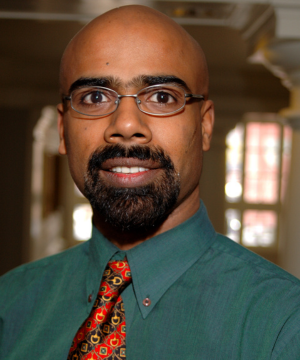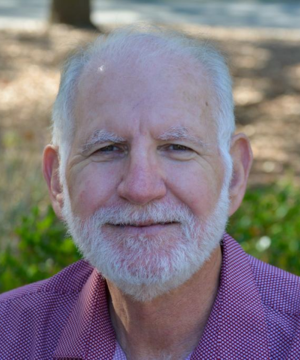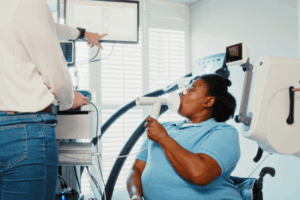Oncology
Chronic Graft-versus-Host Disease
Prophylactic Strategies in Patients Undergoing Allogeneic Hematopoietic Stem Cell Transplantation
Overview
The goals of allogeneic hematopoietic stem cell transplantation (allo-HSCT) are multifaceted and include maintaining the graft-versus-tumor (GVT) effects to prevent relapse while also avoiding complications stemming from the transplant. Prophylactic strategies continue to be developed.
What are your thoughts on current and future strategies to prevent acute graft-versus-host disease (GVHD) and chronic GVHD (cGVHD)?
John Koreth, MBBS, DPhil
|
|
“I think that we are eager to see how combinations of some of the aforementioned approaches might advance the goal of reducing cGVHD even further in the future, especially without risking the persistence of the graft-vs-leukemia responses.”
In thinking about prophylaxis, we come back to the idea of identifying the optimal donor, also recognizing that, in patients who receive allo-HSCT for a hematologic malignancy, we have the challenges of immune reconstitution and maintaining an adequate GVT response, as well as preventing excessive rates of GVHD, especially severe GVHD and moderate to severe cGVHD.
There has been a reduction in nonrelapse mortality after allo-HSCT over the years, which probably reflects several influences. There have been advancements in supportive care, and there have also been advancements in donor and recipient genotyping. So, progress has occurred, independent of the modalities that we use for GVHD prevention.
Given an “ideal matched donor,” how else can we reduce the risk of living with cGVHD without obviating the GVT immune response? Well, in an ideal world, more of the allo-HSCTs performed for malignancy would be bone marrow stem cell grafts. Anasetti and others have shown reduced rates of cGVHD with bone marrow grafts vs peripheral blood stem cell grafts; however, peripheral grafts are often preferred nowadays, for a variety of reasons.
Prophylactic strategies also include the so-called graft-sculpting or graft-shaping protocols. Significant reductions in moderate and severe cGVHD have been seen, but some of these strategies have been associated with trade-offs (eg, risk of cytomegalovirus infection). Infusing regulatory T cells, either in a matched or a haploidentical transplant context, is another approach to try to limit cGVHD.
Of course, post-transplantation cyclophosphamide (PTCy)–based regimens have, over the last 15 years, really revolutionized transplant. PTCy and tacrolimus plus mycophenolate mofetil combination therapy prevents GVHD in peripheral blood transplants with HLA-matched donors. Recent data also suggest that the addition of abatacept can have substantial activity in reducing the development of severe acute GVHD.
I think that we are eager to see how combinations of some of the aforementioned approaches might advance the goal of reducing cGVHD even further in the future, especially without risking the persistence of the graft-vs-leukemia responses.
Robert S. Negrin, MD
|
|
“Every approach that we pursue must factor in not only the goals of treatment with allo-HSCT but also the possible costs, or consequences, of achieving success with each of these goals (eg, cGVHD, infection, and relapse). These are the things that can only be sorted out through carefully constructed randomized trials.”
I agree that we are dealing with a very complicated situation in which we are trying to achieve multiple goals in patients undergoing allo-HSCT. The first goal is to achieve a successful allo-HSCT while limiting toxicity, as measured by nonrelapse mortality. We are also trying not to compromise immunity, as measured by risk of infection. And, finally, we are trying to reduce GVHD while also maintaining GVT effects.
Every approach that we pursue must factor in not only the goals of treatment with allo-HSCT but also the possible costs, or consequences, of achieving success with each of these goals (eg, cGVHD, infection, and relapse). These are the things that can only be sorted out through carefully constructed randomized trials. And there are multiple ways to accomplish what we are trying to achieve in allo-HSCT. One way is not necessarily the absolute best, but it comes down to designing and conducting trials that lead to convincing results and moving these findings forward in effective ways.
This includes performing randomized trials that allow us to make progress by assessing one approach versus another. Those trials have been incredibly impactful. I think that the Blood & Marrow Transplant Clinical Trials Network has done an excellent job with organizing some of these trials, and some drug companies are also doing that. Further, it is imperative that we do this in a large multi-institutional fashion because we have learned from experience that the results from a single institution's, or a few institutions', phase 2 trials are often very difficult to reproduce.
Sergio A. Giralt, MD
|
|
“I love the concept of graft sculpting. We must find ways to perform transplants that are precise, personalized, and predictable.”
I agree with my colleagues regarding the continued importance of well-constructed clinical trials. We cannot rest on our laurels. Severe cGVHD is an entity that continues to cause mortality in our patients beyond 2 years. And, despite the success of PTCy, you can expect that it may not perform well in the prevention of cGVHD in the setting of a myeloablative transplant.
The other element that my colleagues have alluded to is the need to prevent relapse. The current thinking is that the best way to prevent relapses may be to use some form of cellular therapy post transplant. However, in the context of having to have chronic immune suppression in these patients, those cellular therapies, unfortunately, are not likely to work well. I love the concept of graft sculpting. We must find ways to perform transplants that are precise, personalized, and predictable.
References
Anasetti C, Logan BR, Lee SJ, et al; Blood & Marrow Transplant Clinical Trials Network. Peripheral-blood stem cells versus bone marrow from unrelated donors. N Engl J Med. 2012;367(16):1487-1496. doi:10.1056/NEJMoa1203517
Bolaños-Meade J, Reshef R, Fraser R, et al. Three prophylaxis regimens (tacrolimus, mycophenolate mofetil, and cyclophosphamide; tacrolimus, methotrexate, and bortezomib; or tacrolimus, methotrexate, and maraviroc) versus tacrolimus and methotrexate for prevention of graft-versus-host disease with haemopoietic cell transplantation with reduced-intensity conditioning: a randomised phase 2 trial with a non-randomised contemporaneous control group (BMT CTN 1203). Lancet Haematol. 2019;6(3):e132-e143. doi:10.1016/S2352-3026(18)30221-7
Carnevale-Schianca F, Caravelli D, Gallo S, et al. Post-transplant cyclophosphamide and tacrolimus-mycophenolate mofetil combination governs GVHD and immunosuppression need, reducing late toxicities in allogeneic peripheral blood hematopoietic cell transplantation from HLA-matched donors. J Clin Med. 2021;10(6):1173. doi:10.3390/jcm10061173
Hamilton BK. Updates in chronic graft-versus-host disease. Hematology Am Soc Hematol Educ Program. 2021;2021(1):648-654. doi:10.1182/hematology.2021000301
Holtick U, Albrecht M, Chemnitz JM, et al. Bone marrow versus peripheral blood allogeneic haematopoietic stem cell transplantation for haematological malignancies in adults. Cochrane Database Syst Rev. 2014;(4):CD010189. doi:10.1002/14651858.CD010189.pub2
Kröger N, Solano C, Wolschke C, et al. Antilymphocyte globulin for prevention of chronic graft-versus-host disease. N Engl J Med. 2016;374(1):43-53. doi:10.1056/NEJMoa1506002
Ngwube A, Rangarajan H, Shah N. Role of abatacept in the prevention of graft-versus-host disease: current perspectives. Ther Adv Hematol. 2023;14:20406207231152644. doi:10.1177/20406207231152644
Nunes NS, Kanakry CG. Mechanisms of graft-versus-host disease prevention by post-transplantation cyclophosphamide: an evolving understanding. Front Immunol. 2019;10:2668. doi:10.3389/fimmu.2019.02668
Pasquini MC, Logan B, Jones RJ, et al. Blood & Marrow Transplant Clinical Trials Network report on the development of novel endpoints and selection of promising approaches for graft-versus-host disease prevention trials. Biol Blood Marrow Transplant. 2018;24(6):1274-1280. doi:10.1016/j.bbmt.2018.01.002
Shaw BE, Jimenez-Jimenez AM, Burns LJ, et al. National Marrow Donor Program-sponsored multicenter, phase II trial of HLA-mismatched unrelated donor bone marrow transplantation using post-transplant cyclophosphamide. J Clin Oncol. 2021;39(18):1971-1982. doi:10.1200/JCO.20.03502
Shimosato Y, Tanoshima R, Tsujimoto S-I, et al. Allogeneic bone marrow transplantation versus peripheral blood stem cell transplantation for hematologic malignancies in children: a systematic review and meta-analysis. Biol Blood Marrow Transplant. 2020;26(1):88-93. doi:10.1016/j.bbmt.2019.07.025
Tamari R, Oran B, Hilden P, et al. Allogeneic stem cell transplantation for advanced myelodysplastic syndrome: comparison of outcomes between CD34+ selected and unmodified hematopoietic stem cell transplantation. Biol Blood Marrow Transplant. 2018;24(5):1079-1087. doi:10.1016/j.bbmt.2018.01.001
Walker I, Panzarella T, Couban S, et al; Canadian Blood and Marrow Transplant Group. Pretreatment with anti-thymocyte globulin versus no anti-thymocyte globulin in patients with haematological malignancies undergoing haemopoietic cell transplantation from unrelated donors: a randomised, controlled, open-label, phase 3, multicentre trial. Lancet Oncol. 2016;17(2):164-173. doi:10.1016/S1470-2045(15)00462-3
Wu L, Zhou M, Li Y, et al. Prospective study of a modified post-transplantation cyclophosphamide regimen for severe aplastic anemia patients with HLA-haploidentical transplantation. Transplant Cell Ther. 2023;29(7):463.e1-463.e7. doi:10.1016/j.jtct.2023.04.015













